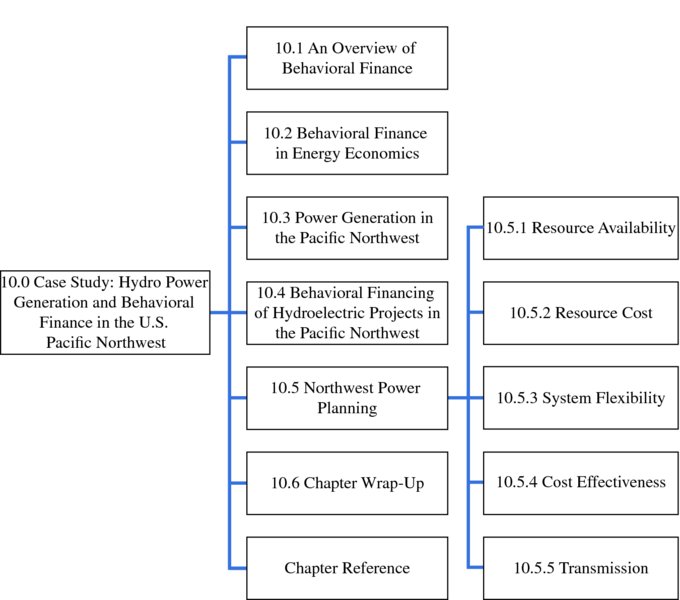CHAPTER 10Case Study: Hydro Power Generation and Behavioral Finance in the U.S. Pacific Northwest
Contributed by Bill Dickens

A primary component of integrated resource planning is determining a utility’s long-term load-resource balance. The load-resource balance identifies both the timing and magnitude of potential future power resource deficits. This information is fundamental to assessing whether the electric utility needs additional resources.
In the Pacific Northwest, integrated resource planning for a utility’s load-resource balance is covered over three time frames: annual, monthly, and peak. This assessment indicates that new cost-effective conservation coupled with existing supply resources will likely be sufficient to meet retail load under critical water conditions. Critical water is a sequence of streamflows under which the regional hydro system could produce an amount of power equal to that which could have been produced during the historical critical period given today’s generating facilities and constraints.
Given the region’s unique climate and ecological constraints in generating electric power, behavioral finance models are needed to provide a plausible tool to assist in long-range power planning decisions. Financing power generation involves ...
Get Energy Trading and Risk Management: A Practical Approach to Hedging, Trading and Portfolio Diversification now with the O’Reilly learning platform.
O’Reilly members experience books, live events, courses curated by job role, and more from O’Reilly and nearly 200 top publishers.

